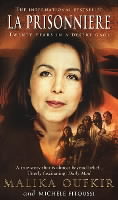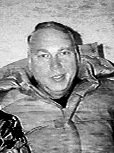
I am not a real radio reporter. However, I do have an unhealthy interest in a dizzying array of topics far and wide across the vast plains of topicdom, and I guess I’m vocal enough about these odds and ends that people seem to know this about me. So, it wasn’t a complete surprise when a friend of mine from a local NPR station asked me to “cover” an event taking place at Frank Lloyd Wright’s celebrated creation known as Fallingwater, located just 50 miles south of my own home outside of Pittsburgh.
September 22 will mark the 70th anniversary of Wright’s original concept drawings of Fallingwater, often described as the single greatest piece of architecture of the 20th century. Thus it is that 93-year old architect and former Frank Lloyd Wright apprentice Edgar Tafel visited Fallingwater last Saturday, to stand on one of his master’s famous balconies in front of a documentary film crew and, as a witness to history, to discuss Wright and Fallingwater with University of Pittsburgh professor Franklin Toker, author of a definitive study of the house,
Fallingwater Rising. (Photo of Toker and Tafel at left.) Tafel is, in fact, the last surviving human being to have been present when Wright drew the house.
I am fortunate enough to own a home designed by another of Frank Lloyd Wright’s apprentices, the late Peter Berndtson; my home is featured in another book,
Organic Vision: The Architecture of Peter Berndtson, by D. Miller & A. Sheon (The Hexagon Press, 1980). Armed with my enthusiasm for the work of Wright and his Taliesin fellows, after a crash course in sound engineering given to me by my reporter friend, I arrived early at Fallingwater on a rainy Saturday morning, wearing one of my best suits. (I doubt that Edward R. Murrow wore anything else, unless he was in a war zone. Even then . . .) My job, handed to me by an apparently seriously understaffed news department, was to meet with Tafel and Toker, record their conversation, and if possible ask a few questions of my own.
Although Tafel and the film crew were running late, shortly after I arrived I encountered Franklin Toker, a scholar with a twinkle in his eye. We discussed Wright, Fallingwater, Tafel and Berndtson, and he regaled us with tales from his “eighteen years” of research on
Fallingwater Rising. Although he is principally a scholar of medieval Italian architecture, Toker was inspired to write about Fallingwater for a number of reasons. First, if you are an architect in Pittsburgh, it is simply expected that you should be able to say something intelligent about Fallingwater. Secondly, Toker points out that while booksellers will claim that dozens of books have been written about Fallingwater, in his own experience he came to believe merely that dozens of books have a picture of Fallingwater on their cover, and that no single work had come close to telling the full Fallingwater story.
Toker’s usual research involves translating medieval Latin texts, so researching Fallingwater was a challenge in that he actually had to sit down and interview people. He noted that it was often the emotional content of an interview, rather than the facts elicited, that was of most value in compiling oral histories – especially where the frail memories of people in their 90s were concerned.
The day's star nonagenarian, courtly Edgar Tafel, seemed anything but frail when he arrived. Sporting a snazzy gold print jacket and a collarless black shirt, he was hobbled a bit by arthritis, but it was also clear that he enjoyed basking in the glow of his master’s creation, and that it gave him a certain energy to be in its presence. As the camera crew readied itself and I concentrated on my sound chores, plugging in to the sound of the obliging film crew, Tafel chatted jauntily with Toker, and even sang a few bars of an old Taliesin song (“we love Mozart . . . we hate Beaux Arts”).
Tafel has been telling the story of Wright first putting pencil to paper for so long, it has an air of being rather rehearsed at this point. But Tafel is part showman, to be sure, so as he tells the tale, he is measuring his audience's reaction. He tells how Wright and his team were ensconced at Taliesin in Wisconsin, when they received a call from E.J. Kaufmann, Wright's anxious client, informing Wright that he and his wife had just landed at Milwaukee and would be arriving soon, wanting to see his preliminary drawings. There were none, of course, at that moment, so Wright sent his assistants scurrying to make Taliesin ready for his visitors, and with pencils flying, a mere couple of hours later Wright had a picture of Fallingwater on his drawing table, waiting for E.J. and Liliane. The design just poured out of him, Tafel recalls. He had not sketched one line prior to Kaufmann's call.
As the discussion took its course, Toker invited me, standing off camera, to shoot a couple of questions at Tafel. I noted that Tafel was part of a select group of architects who had received their early training from Wright, many of whom had gone on to interesting careers, and asked if there was one thing that all of the Wright apprentices seemed to share from their experience with Wright. Tafel’s answer meandered a bit, but by the giddy end it was clear that the one thing that the Wright apprentices all shared was a poor education in engineering – most had to supplement their education in order to be certified, and many, like Wright himself, were never certified as architects. I think I can attest to this, given my own experience with the work of a Wright apprentice. Roofs seem to be a special problem for Wright-style homes. It reminds me of the comments of one of Wright’s clients regarding chronic roof leaks: “That’s what happens when you leave a work of art out in the rain.”
I also asked Tafel what he hoped people would be able to take away from Fallingwater 70 years from now. He paused, then quietly mused, “Who can tell? . . . who can tell?”
With the formal interview completed, Tafel was led off by Fallingwater curators for a board meeting, leaving Toker and I to wrap up some final thoughts on Fallingwater. His answers to my questions were so beautifully rendered, I will await the transcript and bring them to these pages in a later installment.
Luckily, my excitement did not interfere with getting good sound -- the crisp tones of Tafel and Toker, with the gentle hiss and bubble of the famous waterfall underneath. I am hoping to report in a few weeks that some portion of it will be airing locally.
Labels: Architecture, Books, Frank Lloyd Wright




















